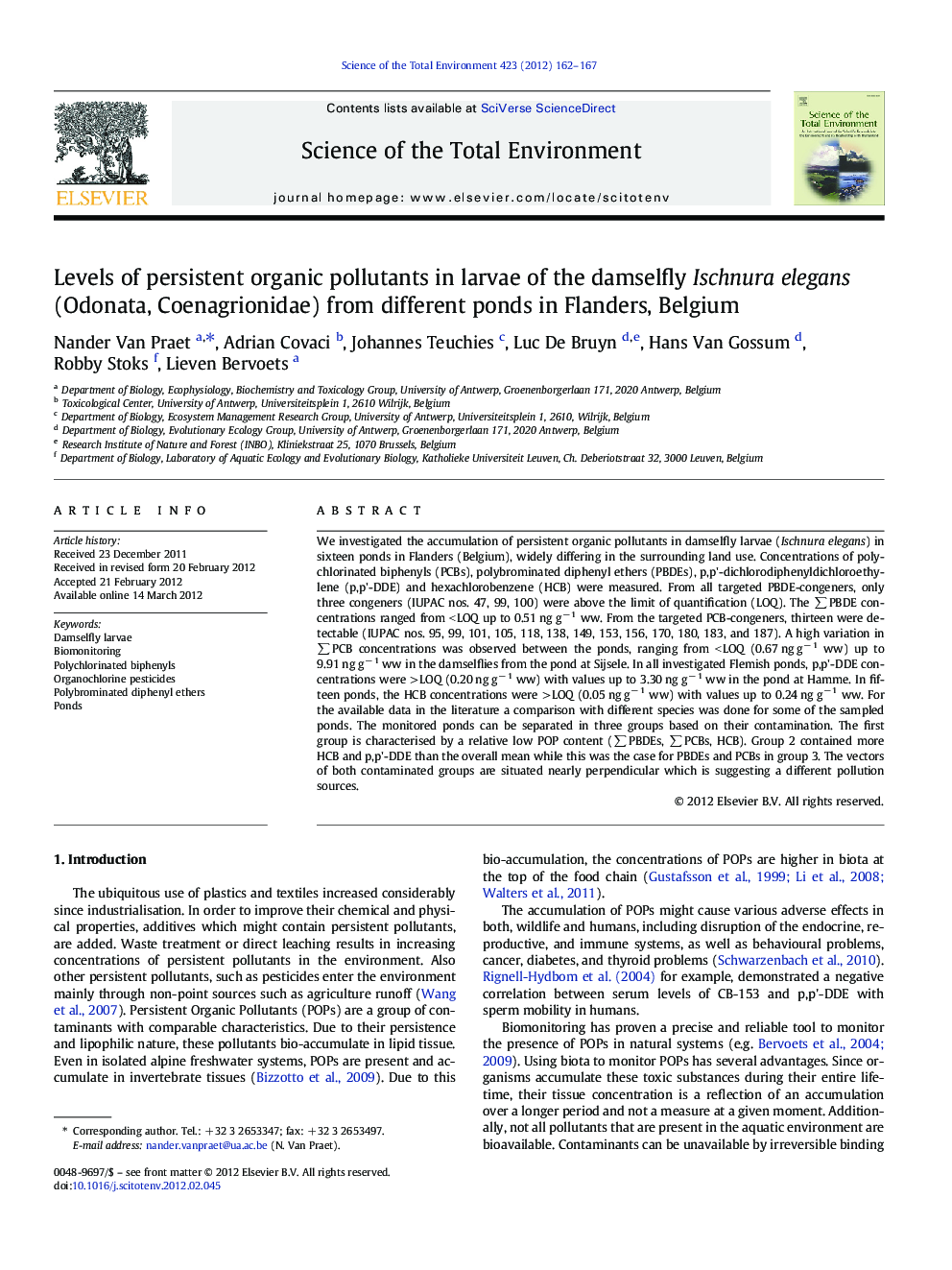| کد مقاله | کد نشریه | سال انتشار | مقاله انگلیسی | نسخه تمام متن |
|---|---|---|---|---|
| 4429565 | 1619828 | 2012 | 6 صفحه PDF | دانلود رایگان |

We investigated the accumulation of persistent organic pollutants in damselfly larvae (Ischnura elegans) in sixteen ponds in Flanders (Belgium), widely differing in the surrounding land use. Concentrations of polychlorinated biphenyls (PCBs), polybrominated diphenyl ethers (PBDEs), p,p'-dichlorodiphenyldichloroethylene (p,p'-DDE) and hexachlorobenzene (HCB) were measured. From all targeted PBDE-congeners, only three congeners (IUPAC nos. 47, 99, 100) were above the limit of quantification (LOQ). The ∑ PBDE concentrations ranged from < LOQ up to 0.51 ng g− 1 ww. From the targeted PCB-congeners, thirteen were detectable (IUPAC nos. 95, 99, 101, 105, 118, 138, 149, 153, 156, 170, 180, 183, and 187). A high variation in ∑ PCB concentrations was observed between the ponds, ranging from < LOQ (0.67 ng g− 1 ww) up to 9.91 ng g− 1 ww in the damselflies from the pond at Sijsele. In all investigated Flemish ponds, p,p'-DDE concentrations were > LOQ (0.20 ng g− 1 ww) with values up to 3.30 ng g− 1 ww in the pond at Hamme. In fifteen ponds, the HCB concentrations were > LOQ (0.05 ng g− 1 ww) with values up to 0.24 ng g− 1 ww. For the available data in the literature a comparison with different species was done for some of the sampled ponds. The monitored ponds can be separated in three groups based on their contamination. The first group is characterised by a relative low POP content (∑ PBDEs, ∑ PCBs, HCB). Group 2 contained more HCB and p,p'-DDE than the overall mean while this was the case for PBDEs and PCBs in group 3. The vectors of both contaminated groups are situated nearly perpendicular which is suggesting a different pollution sources.
► We indicated the presence of accumulated POPs in damselfly larvae.
► The accumulation capacity of damselfly larvae makes them useful for passive biomonitoring.
► We observed a great variation in POP concentrations among the study ponds.
► An advance of using damselfly larvae is the accurate reflection of the present bioavailability.
Journal: Science of The Total Environment - Volume 423, 15 April 2012, Pages 162–167